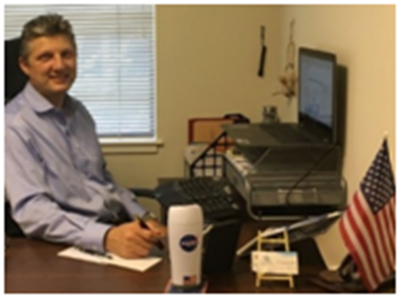
Editor’s Letter
Amin Ghafooripour, Ph.D., PE,
M. ASCE, M.SEI, M. ASEE, M. SEAONC, M.ACI. M.AWC
Faculty at Santa Clara University
Fellow SEI members, one of the greatest joys of being a structural engineer, is the abundant opportunities to create a lifelong structure for the next generation. Every time that I look into my past 25 years, I feel blessed that I had this privilege to design a structure that still stands, and it is for the people and society.
In this issue, you can learn about the shortcomings and pitfalls of our profession and answers to some professional questions about the Epoxy materials from Simpson Strong-Tie company, new innovative solutions for seismic retrofitting from QuakeWrap company in the marine environment. On behalf of the SEI-SF chapter, I would like to convey our appreciation to Simpson Strong-Tie and QuakeWrap companies for their support. We have an article about the evolution and history of structural engineering. The paper envisions the future of this area of engineering. The outreach department had an interview with Daniel Coonce (the Engineering teacher of the year in 2016 at Westmont High School) that has inspired his students. We believe each one of us is unique and has stories that can inspire us all.
Additionally, you can find SEI SF past and future events, A Word from the Chair and founder of the chapter; or get to know one of our members their background.
Recently, our board of directors proudly approved the Scholarship for our Students in the Bay Area (California United States.) You can find more information about it in this newsletter and on our website.
I started with the reason why we should be joyful as a structural engineer, and I would like to finish my letter with the fact that the greatest joy of being a structural engineer is the abundant opportunities and the necessity for lifelong learning.That is why at SEI-SF, we are committed to publishing this newsletter. I always inspired from this word that once Rev. Dr. Martin Luther King Jr. said:
“The function of education is to teach one to think intensively and to think critically. Intelligence plus character – that is the goal of true education.”
Happy Reading!
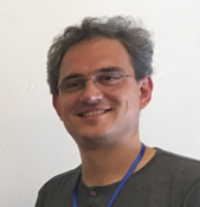
A Word from the Chair
Vladimir Calugaru, PhD, PE, M.ASCE
Dear SEI-SF Members,
As we all navigate the challenges bestowed on us by the year 2020, it warms my heart to know that we have such a strong community of structural engineers in the Bay Area. Now is a particularly important time to be the change we want to see in the world, and for this reason SEI of ASCE, San Francisco Chapter continues to be an active professional organization, constantly adapting and innovating to support our members and the broader community. Follow our announcements for upcoming webinars and other events.
I am particularly proud to announce the first annual scholarship offered by our organization. See the scholarship announcement with the link to download the application later in this newsletter. I truly hope that the $2,000 scholarship will make a difference and help support talented structural engineering undergraduate and graduate students in these uncertain times.
I would like to thank our board members for continuing to support SEI-SF. Your dedication and contribution is truly inspiring and is exactly when we need to keep providing our services to the structural engineering community. I would like to extend my gratitude to our broader membership as well – thank you for supporting us! Let us continue to work side-by-side to make the world a safer and a more resilient place.
Kind Regards,
Vladimir Calugaru, PhD, PE, M.ASCE
Chair, SEI of ASCE, San Francisco Chapter
Senior Engineer, InfraTerra, Inc.
Announcing the 2020 SEI of ASCE, San Francisco Chapter Scholarship
Structural Engineering Institute (SEI) of the American Society of Civil Engineers (ASCE), San Francisco Chapter is happy to announce the 2020 SEI of ASCE, San Francisco Chapter Scholarship. The purpose of this scholarship is to promote educational opportunities for students that are interested in pursuing careers in structural engineering and to promote the long-term impact of SEI and ASCE.
The $2,000 scholarship may be divided and awarded to multiple winners at the discretion of the selection committee. Up to four winners may be selected. All full-time undergraduate and graduate students attending a university within the ASCE San Francisco Section area of service (the coast of Northern California from Monterey Bay to Oregon, including the entire San Francisco Bay Area and Fresno) and enrolled in a civil engineering program with a focus in structural engineering are eligible.
We look forward to reviewing the applications and awarding the scholarship based on academic and professional merit, as well as financial need.
Download the scholarship application on our website (seisf.org) or by clicking here.
Applications are due by end of day July 24, 2020.
Winners will be selected and notified by end of day July 31, 2020.
SEI SF Out and About….
Technical Directors’ Notes
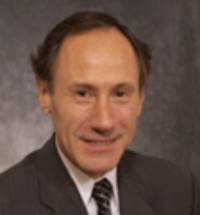
Dr. Francisco Medina,
PE, M.ASCE
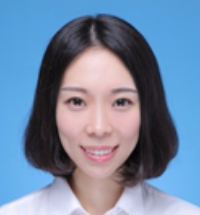
Dr. Shanshan Wang PE, LEED AP, M. ASCE
Where We Are Going… Upcoming Events
On July 16th, we will be hosting a presentation from 12:00PM to 1:30PM on Structural Engineering Engagement and Equity (SE3) 2018 national survey results. This event will be hosted through webinar.
This session will review the results of a survey conducted by the NCSEA Structural Engineering Engagement and Equity (SE3) Committee in 2018. The survey received responses from over 3,000 practicing structural engineers and covered various topics including career development, pay, and work-life balance. In this session, we will share information from the SE3 committee, and discuss key takeaways to improve engagement and retention in our profession.
Presenters: SEAONC SE3 Committee Co-Chairs, Rachel Cohen, P.E. Engineer at Forell/Elsesser Engineers and Brenna Marcoux, P.E Project Engineer at FTF Engineering, Inc.
Where We Have Been….Past Events
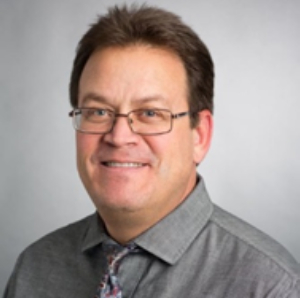
Historian: Jeffrey S. Falero, PE
Senior Structural Project Engineer
March 2020
Presentation at Stanford University: ‘Insights from Reliability-Based Design to Complement the LRFD Approach’
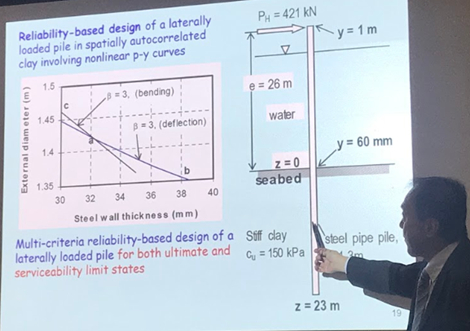
February 2020
Presentation ‘The Chase Center’, Part 1 (Engineering & Construction)
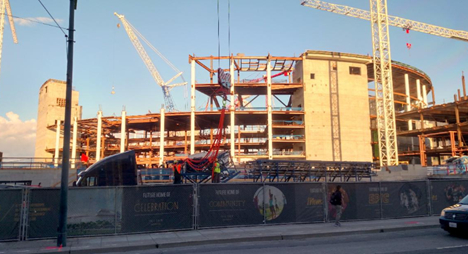
January 2020
59-11 Blast Protection of Buildings – ASCE/SEI Webinar Viewing Event
Upcoming Conferences
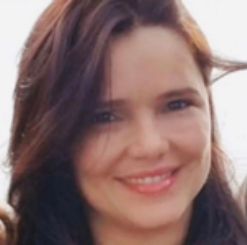
Secretary Milene La Torre, E.I.T.
MSc of structural Engineering
- ASCE convention 2020 October 28-31, 2020 – Anaheim, California
https://www.asce.org/conferences_events/ - ACI Concrete Convention on October 25-29, 2020 – Raleigh, NC
https://www.concrete.org/events/conventions/futureconventions.aspx - Watershed Management Conference May 20-21, 2020 – Henderson, Nevada
https://www.watershedmanagementconference.org/program/ - International Conference on Transportation & Development – Seattle, Washington
https://www.asce-ictd.org/location - 4th International Symposium of Frontiers in Offshore Geotechnics August 16- 19 Austin, Texas
https://www.isfog2020.org/ - Bridge Magazine International Bridge Engineering Online Workshop
The online workshop is sponsored by Tianjin Urban Construction Design Institute, China Construction 6th Engineering Division Corp, Ltd, as well as China Railway Jiujiang Bridge Engineering Co.,Ltd.
About the International Bridge engineering Online Workshop
The COVID-19 pandemic has created unprecedented consequences across the globe and has affected the traditional offline academic events planned for year 2020 that aim at exchanging knowledge and advancing the practice of bridge engineering worldwide.
To cope with such circumstances, BRIDGE MAGAZINE of China put forward its new online conferencing format and launched its International Online Workshop series. With the unappeased COVID-19 pandemic, the International Online Workshop on Orthotropic & Steel Bridges, which is BRIDGE MAGAZINE’s third international online workshop, will be broadcasted on 16th and 17th July 2020. It is co-organized by ASCE Capital Branch of Sacramento, ASCE/SEI San Francisco Chapter, The Scientific Committee of the Orthotropic Bridge Conferences and the Department of Civil Engineering, Santa Clara University.
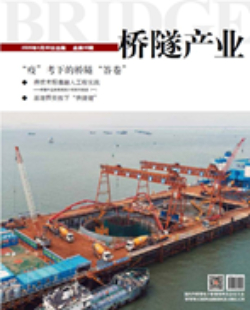
The workshop itself will cover a range of topics including:
- The Development and Achievements of Orthotropic Bridge Decks and Steel Box Girders in terms of Specifications, Design, Manufacturing, etc.
- The Types and Common Diseases of the Pavement of Orthotropic and Steel Bridge Decks.
- The Research and Innovation of Orthotropic Steel Decks.
- Composite Decks of Orthotropic Steel Bridges and their Engineering Application.
- The New Structures, New Materials, New Technologies and New Concepts of Steel Bridges.
- The Safety and Durability of Steel Structural Bridges.
With a series of newly recorded video content from 17 lecturers of diverse background, the International Online Workshop on Orthotropic & Steel Bridges will enable designers, consultants, researchers, students, owners, contractors, authorities and other interested participants alike to gain the latest insights from the Chinese and international bridge community and exchange ideas in a dedicated Q&A discussion session.
The lecturers and presentation titles of the International Online Workshop on Orthotropic & Steel Bridges include:
- Mr. YE Qi, CHI Engineers Consulting, USA
Presentation Title: Open Rib Orthotropic Decks – History and Recent Development
- Dr. Xiaohua Hannah Cheng, New Jersey Department of Transportation, USA
Presentation Title: Fatigue and Durability of Orthotropic Steel Decks – What We’ve Learned from Research and Practice?
- Prof. Robert Conner, Purdue University, USA
Presentation Title: Variability in Acoustic Properties and UT & PAUT NDT Data
- Dr. Amin Ghafooripour, Santa Clara University, ASCE/SEI-Director of Outreach Program, USA
Presentation Title: Crawler Crane Live Load Distribution Factor on Bridge Decks
Scholarships
- Structural Engineering Institute American Society of Civil Engineers San Francisco Chapter Scholarship.
http://asce-sf.org/branches-institutes-and-committees/sei/ - SEI Student Scholarship Application deadline December 4 2020.
https://www.structurescongress.org/program/scholarships - SEI Young Professional Scholarship
https://www.structurescongress.org/program/scholarships
SEI SF New Board Members
The family of SEI SF chapter is growing quickly, and we proudly have 11 board members.
Since the last election, we have two new board members.
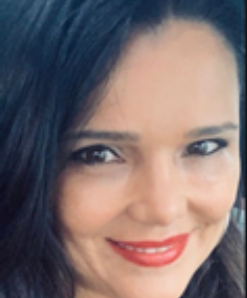
Milene La Torre, E.I.T. accepted the position of the SEI secretary. Milene is a structural engineer currently working at Kembcon engineers in Burlingame. She has a Masters in Civil Engineering from San Jose State University. As an upcoming structural engineer her ambitious are to provide excellence in structural engineering, aiding safeguard to the public while using sustainable practices.

Rachel Chandler accepted the position of Marketing Director. Rachel is a designer at ZFA Structural Engineers in their San Francisco office. Rachel was at California Polytechnic State University, San Luis Obispo, pursuing both her BS and MS in Architectural Engineering. Her MS research work focused on sustainable self-consolidating grout for CMU special shear walls and practical detailing for CMU special shear walls.
SEI-SF chapter is actively looking for more volunteers, and the following positions are open:
Inter-Organization Director
Qualifications
Candidates for Inter-Organization Director shall be a current SEI-SF member for at least one (1) fiscal year.
Duties
The Inter-Organization Director shall serve as a liaison between SEI SF and various professional development organizations within the industry to facilitate a close working relationship: establish lines of communication between organizations; coordinate joint events/activities with other groups.
Webmaster
Qualifications
Candidates for Webmaster shall be a current SEI-SF member for at least one (1) fiscal year.
Duties
The Webmaster shall be the primary individual responsible for maintenance of the chapter’s web presence. This presence shall include a calendar of events and electronic communication mechanism that are available for use by all BOD members. The webmaster shall in a timely manner update the chapter’s web presence with content provided by the chapter members and will also maintain connections to other communication mechanisms such as those provided by social media sites.
For more information, please visit our website
http://asce-sf.org/branches-institutes-and-committees/sei/bod-roles/#interorg_director
Technical Corner
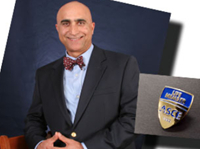

New Advances in Repair of Submerged Piles
Mo Ehsani, PhD, PE, S.E., President, QuakeWrap Inc. and Centennial Emeritus Professor of Civil Engineering, The U. of Arizona
Most structural engineers frequently encounter the design of buildings and bridges in their careers. However, a relatively small fraction get involved with the design of marine infrastructure such as submerged piles, see walls or sheet piles. This paper summarizes the structural enhancements and improved constructability offered by a new system developed by the author; full details of the system are available in two recent webinars that have been recorded and area available for download at www.PileMedic.com/webinars.html
PileMedic® is based on a new type of Fiber Reinforced Polymer (FRP) SupperLaminate developed a decade ago (Ehsani 2010). These laminates are made in..
Videos showing the highlights of many of these projects are available on our YouTube channel and can be viewed at this link: https://tinyurl.com/y8mvdhs9
SEI San Francisco Chapter Outreach News
By: Amin Ghafooripour, Ph.D., PE, Outreach Director
Interview with a successful High School Engineering teacher
When the world brings you lemons, make lemonade!
Education is Freedom!
Daniel Coonce, Engineering Teacher at Westmont High School, Campbell, CA, Teacher of the Year in 2016

I have worked as an electrical engineer, a plumber, and a teacher. I have enjoyed the flexibility to work in different capacities and environments. I attribute my fortunate ability to change careers to the excellent education I received as a kid and continue to pursue. A poster in my engineering lab at Westmont High School reads, “Education is Freedom.” This brief statement outlines my philosophy about the value of education and a major reason why I entered the teaching profession.
I was born in Los Gatos in 1958, the year the Soviet Union launched Sputnik, the first satellite, into space. The Santa Clara Valley was rapidly transforming from an agricultural economy (the “Valley of the Heart’s Delight”) to a high tech economy (Silicon Valley). I went to UC Davis in 1977 and graduated four and a half years later with a BSEE. I chose electrical engineering, not out of an inherent passion for the subject, but for pragmatic reasons. Silicon Valley was a boomtown for E.E.’s. Jobs were abundant, and the pay was good.
After 15 years of working in the industry as an E.E. and several “sabbaticals” where I bicycle toured throughout Europe and the U.S., I went back to school to earn a teaching credential. At the time, I naively reasoned that I would be a good math and science teacher because I knew the subject matter, and I liked kids. I had a lot to learn and many disappointments to overcome to get where I am now as a teacher.
I now teach at Westmont High School in Campbell, CA. I have been here for eight enjoyable years. My courses are Integrated Math 1 ( freshman math), and three of the four engineering elective courses we offer at Westmont: Introduction to Engineering Design (1st year), Digital Electronics (3rd year), and Engineering Design and Development ( the capstone 4th-year course). The 2nd year course, Principles of Engineering, is taught by a friend, a colleague, Alfonso Garcia. Our engineering program consists of the curriculum from Project Lead the Way (PLTW). The lessons are project-based, and students are encouraged to collaborate as they develop the engineering knowledge and “soft” skills that they will need as professional engineers.
Amin: What was your favorite subject to study in school?
Daniel: I always enjoyed math and sciences the most. I liked math because I was pretty good at it (and the answers to the odd-numbered problems were found in the back of the book!) Sciences sparked my curiosity and helped me to understand the world around me. I liked the hands-on science labs the most.
Amin: What sort of extracurricular activities do you participate in?
Daniel: I coach football, and I am an advisor for the robotics team at Westmont High School. I love to travel, and I have bicycled around Europe and North and South America for months, sometimes years, on end. My longest adventure was a two-year bike trip from Fairbanks, Alaska to Patagonia, Argentina. I had just turned fifty, had been teaching math and science at a middle school in inner-city San Diego for ten years, and I was ready for a change. I love the freedom of being on the road, self- contained with the minimal essential gear in my panniers. I love to wake up in my tent in the morning, unzip the tent fly to look out and remember where I had stopped the previous night. Breaking camp and setting forth with the cool morning air in my face, filled with anticipation of what I will see and who I will encounter on the bike ride that day. Sometimes I have similar exhilarating feelings when I walk onto campus before school. I suppose that is one of the reasons I love teaching. It is an adventure. Each day presents unexpected situations.
Amin: What has motivated you to teach Engineering courses? How many years?
Daniel: I started teaching the engineering courses in my second year at Westmont. A teacher retired, and I took over for her. I have been teaching the PLTW engineering courses for seven years. It is very satisfying to be able to work with the same students for four years and to watch them mature and develop as young engineers.
Amin: How do you see the Engineering area as the future of our kids in this country? Do you think, in the STEM, or STEAM, should we focus more on the letter “E” more?
Daniel: As an Engineer, I am biased to choose “E”. However, I believe we need to focus on all of the above. They are interdependent. Math is required in science, and both are foundations for engineering and technology. The creativity and aesthetics of art enhance engineering design.
Amin: I know that you have inspired a lot of students, tell us, how do you try to inspire students and help them to understand Engineering as their future career?
Daniel Throughout the four-year engineering program, I encourage the students to visualize themselves as successful professionals. I refer to them as engineers and emphasize academic vocabulary, particularly to engineering. I teach students to think and record their ideas like engineers. They learn how to use the design process to solve problems. The Project Lead the Way Engineering curriculum that I use is mostly hands-on, collaborative projects. Students really enjoy it. When they are having fun, I remind them that being an engineer will be like that. I take time to describe my experiences in college and as an engineer. I tell them of the financial security and the satisfaction of designing and making things as an engineer. I think we all really want similar outcomes from our jobs and lives: to enjoy the work, to be financially secure and physically comfortable, and to feel that the work we do is meaningful to the betterment of humanity. I try to show my students that a career as an engineer can provide those outcomes.
Amin: How do you separate different disciplines of engineering in your classes? Do you have any part of your curriculum related to Civil Engineering or Structural/Mechanical Engineering?
Wait, Wait, Don’t Google Me…. Structural Engineering Trivia
Mark Bird (Treasurer at SEI-SF, Wesley Engineering Group, Inc.), P.E., M.ASCE

1- Who was the first structural engineer?
2- What are the three basic types of structures?
3- Where does the word “skyscraper’ come from?
4- How old is the great wall of China?
(Submit your answers to trivia@seisf.org. The 3rd email with the most correct answers shall receive a certificate to attend the next SEI SF event free. Answers to the trivia are to be revealed in the next issue of the newsletter.)
Member’s Perspective
Past, Present, and Future of Structural Engineering
Extraterrestrial and ROBO-Structures
The Future of Structural Engineering
Amin Ghafooripour, Ph.D., PE
Director of Outreach Program at SEI, San Francisco chapter
Adjunct Professor at Santa Clara University
President at Padir Consulting Engineers
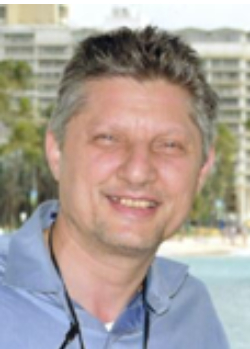
Summary
This article is a review of the trend of the evolution of structural engineering in the history of humankind and suggests the new area of “Extraterrestrial Structural Engineering” for the future of this profession. As per the observations, in the future, structural engineers need to design extraterrestrial structures on the Lunar and Martian environments. Therefore, the author believes that the concept of structural design on other planets requires a new vision with a different approach.
The article reviews the history of structural engineering from the beginning and to shows how humanity started structural engineering. The study shows how and why the area of structural engineering has been created. Research on the current trends and achievements in space explorations, especially in 2019, shows the same pattern of evolution for extraterrestrial structures with faster progress. Therefore, the author suggests thinking about establishing this new area at universities.
In the author’s view, the structural design on Mars or the Moon may be conducted through the idea of the ROBO-STRUCTURE (Introduced by Kiamehr H. and Amin Ghafooripour, 2001). ROBO-STRUCTURE is a new definition of smart structures with robotic abilities that are made of materials with memory or with the ability of automatic reaction to low pressure, temperatures, impacts, radiation, and chemicals that may be found on Mars.
The robotic abilities create self-construction, self-inspection, self-assessment and identification, self-diagnosis, and self-damage detection with the ability to change the form or add the required additional supports when the function of the building needs to be changed, the building is damaged or requires maintenance.
This article is not an official vision of SEI, and it reflects the view of the author; however, as per the new achievements by NASA and after the landing of the NASA insight lander in 2019, all ideas support the need for the new area of “Extraterrestrial Structural Engineering.” In current practice, scientists are focusing on planetary science to understand the Martian environment; Mechanical engineers are thinking about space flight to Mars and other related mechanical designs for Martian equipment. So, this new area of structural engineering is supposed to link mechanical engineering to planetary science to create extraterrestrial structures.
Business Corner

Marketing Director Rachel Chandler, Designer at ZFA Structural Engineers
We Invite YOU to be a Part of Our SEI Chapter
The SEI SF Chapter would like to offer you the opportunity to advertise your business to an audience of over 1500 people who read our newsletter.
Your adverts will be displayed in our newsletters. This is a perfect opportunity to help us develop our chapter’s outreach and ability to help enrich the learning and professional development of structural engineers in your area. We hope you can help us continue our mission.
Please contact info@seisf.org to sponsor and support the SEI SF Chapter, or to advertise on the newsletter, Engineer of Record. Send all suggestions and comments to editor@seisf.org.

What is the difference between Simpson Strong-Tie’s relatively new adhesive, SET-3G™, and its predecessor, SET-XP®.
Jason Oakley, P.E. Simpson Strong-Tie Senior Field Engineer
Wendy Allen, P.E., Simpson Strong-Tie Field Engineering Manager of concrete construction products

We have been receiving a lot of requests lately from engineers wanting to know exactly what the difference is between Simpson Strong-Tie’s relatively new adhesive, SET-3G™, and its predecessor, SET-XP®.
Both are epoxy-based adhesives used to anchor threaded rods and reinforcing bars in concrete base material for structural applications. If you perform a live pull test on a ½”-diameter mild steel rod embedded 4″ deep in 3,000 psi uncracked normal-weight concrete, the result will likely be the same; in both cases, the steel rod will break in a ductile manner at around 11 kips. (To learn more about anchorage failure modes and ductility, click this blog). Yet, the SET-3G design values shown in ESR-4057 come out ahead. But why?


